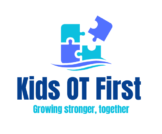Down Syndrome
Down syndrome is a genetic chromosomal disorder also called as “Trisomy 21” where an individual has an extra full or partial copy of chromosome 21. This trisomy 21 causes some physical features along with developmental delays and mild to moderate intellectual disabilities. The exact cause of this extra full or partial chromosome is still unknown. Women’s age 35 or more have high risk of having baby with Down Syndrome, also parents who have one child with Down syndrome and parents who have translocation themselves are at high risk of having another child with Down Syndrome. Both men and women can pass genetic translocation for Down syndrome on to their children.
Down Syndrome features:
- flat nasal bridge
- broad, short hand with single crease on the palm
- protruding tongue
- upward slanting eye lids (palpebral fissures)
- tiny white spots on the colored part of eyes (iris) called Brushfield’s spot.
- extra space between big toe and second toe
- low muscle tone
- excessive joint flexibility
- short stature
Complications:
Babies with Down syndrome may born with some complications or as they grow older these complications becomes more prominent. Following are few complications:
- Some children with Down Syndrome may born with Congenital Heart disease, it can be life threatening and requires heart surgery in early infancy.
- Children with Down syndrome, may born with some abnormalities of intestine, esophagus, trachea and anus; which may results in digestive problems such as GI blockage, gastroesophageal reflex or celiac disease.
- Some people with Down Syndrome may have abnormalities in their immune systems, they are at risk of developing auto immune disorders, cancers or infectious diseases such as pneumonia.
- Because of soft tissue and skeletal changes that lead to the obstruction of their airways and may cause Obstructive sleep apnea in Down Syndrome children.
- Due to Altlanto- Axial instability the people with Down Syndrome has risk of serious spinal cord injury from overextension of the neck.
- Obesity
- Under-functioning Thyroid gland
- Dementia
- Low vision
- Hearing problem
Prevention:
There is no exact way to prevent Down Syndrome. If you are at high risk of having a child with Down Syndrome or you may already have one child with Down Syndrome, it is always recommended to consult a Genetic Counselor before conceiving a baby. This Counselor may recommend few prenatal- tests that are available.
World Down Syndrome Day:

21’st March is celebrated as World Down Syndrome Day to promote awareness about Down Syndrome.
Download some coloring worksheet: https://kidsotfirst.com/wp-content/uploads/2024/03/Coloring-Rock-your-Socks.pdf
Role of Occupational Therapists in Down Syndrome:
Occupational therapists play very important role in early intervention team by treating children with Down Syndrome in various areas of functions such as fine motor skills, gross motor skills, sensory needs and Activities of daily living such as eating, dressing, grooming, play etc..
An Occupational Therapists may do a detailed evaluation of the child with Down Syndrome; for the evaluation Occupational Therapists may use standardized assessment tests, observation and interviews; and then goal of intervention is determined based on child’s strength and weaknesses and also identifies any areas where the child needs any additional support. Once the evaluation is complete the therapists will develop a treatment plan for that child.
